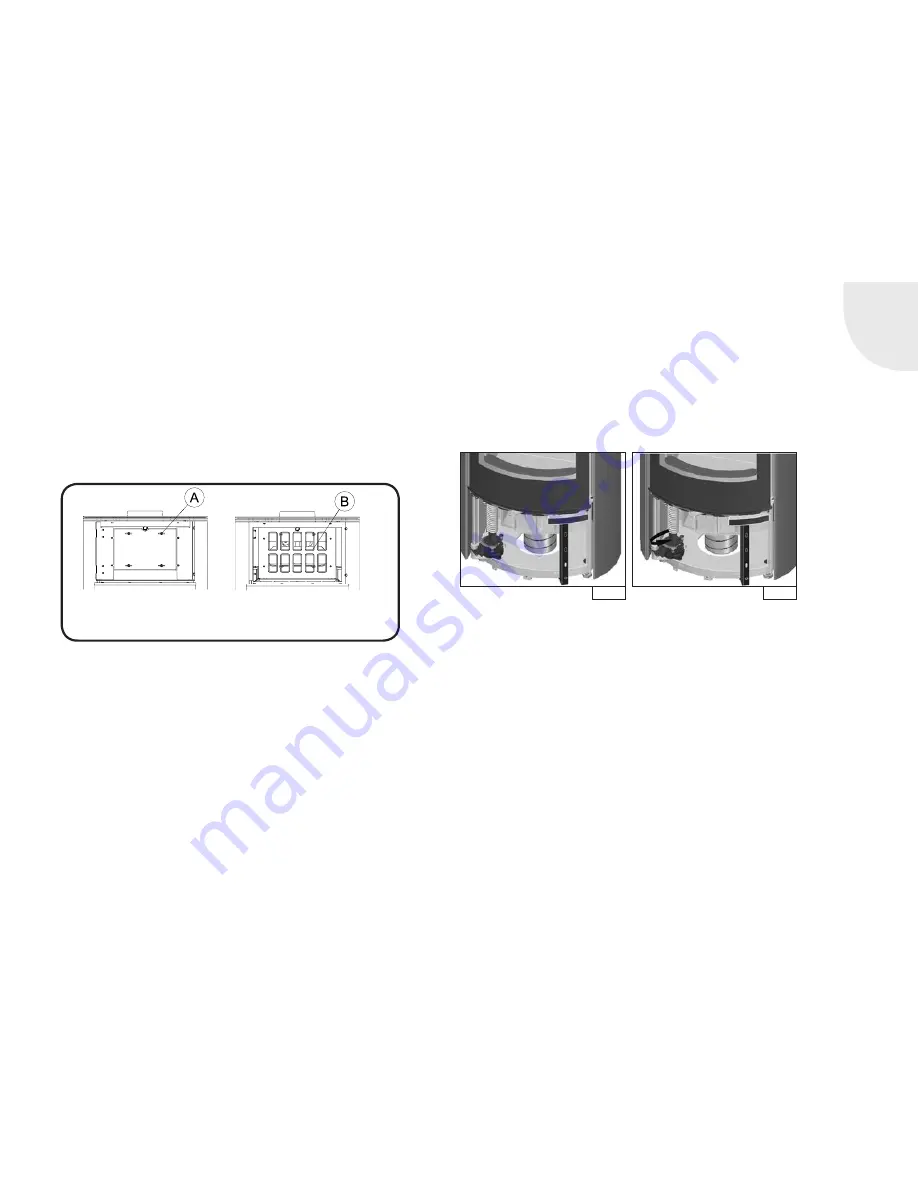
GB
GB
41
M H
2
O, and this unavoidably results in deposits on the surfaces of the heat
exchanger, these surfaces must be cleaned with the provided brush on a regular
basis.
The water heat exchanger is cleaned through the cleaning opening. To do this,
open the upper cladding door and remove the cap by removing the wing nuts.
Now the heat exchanger surfaces are exposed and can be cleaned with the
supplied cleaning brush.
The assembly occurs in the reverse order: First put the cap on the cleaning
opening and re-attach the wing nuts.
Piko H
2
O
Because the water heat exchanger directly cools down the flue gases of the
Piko H
2
O, and this unavoidably results in deposits on the surfaces of the
heat exchanger, these surfaces must be cleaned with the provided brush
on a regular basis.
The operating handle of the cleaning mechanism is included in delivery and
must be inserted in the 20mm hole on the top left side of the unit when
cleaning. After inserting it, it must be twisted about 5 times to the right and
left to the stops (approximately 20°angle of rotation).
A =
remove wing nuts, remove
cleaning cover
B =
remove deposits in the pipes
und on the surfaces!
View from front
6.5 DOOR MECHANISM SENSO S RLU
The locking mechanism, in particular the spring force of the closing mecha-
nism, is preset at the factory so that the door closes ideally.
If it is necessary to increase the closing force (door does not close automat-
ically), proceed as follows:
To access the door mechanism, it is necessary to open the bottom inspection
flap (Fig.
29
). After opening it, the closing mechanism is visible on the hinge
side of the fire door.
To tighten the mechanism, close the fire door and put a hexagon wrench
(wrench size 24) on the key adapter (1) the drive shaft
Now turn the drive shaft to the left to increase the spring force (Fig.
30
).
This should be done in small increments (without gear travel). Then check
the function of the door mechanism. Optimum locking function is guaranteed
if the catch on door wing locks into place and the door closes flush against
the body.
Fig. 29
Fig. 30













































